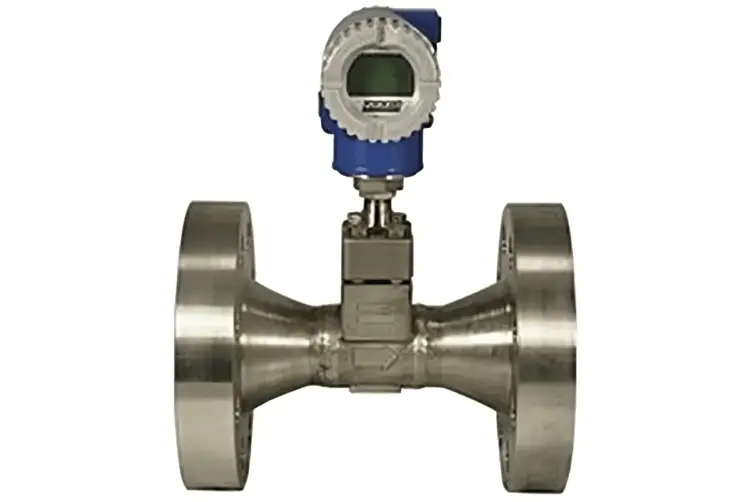
16 Jun vortex flowmeter
A vortex flow meter is a type of flow measurement device that utilizes the principle of the von Kármán effect to determine the flow rate of a fluid. It measures the frequency of vortices generated by a bluff body placed in the flow stream, providing an indirect measurement of the fluid velocity and, subsequently, the flow rate.
The basic principle of operation for a vortex flow meter involves the following steps:
Bluff Body Placement: The flow meter consists of a bluff body, typically a flat plate or a cylindrical rod, inserted into the flow stream. The bluff body creates vortices as the fluid flows past it.
Vortex Shedding: As the fluid flows around the bluff body, vortices are alternately shed from each side of the bluff body. The shedding frequency is directly related to the fluid velocity.
Sensor Detection: The vortex flow meter is equipped with a sensor, often a piezoelectric crystal or a strain gauge, placed downstream of the bluff body. The sensor detects the pressure fluctuations caused by the vortices passing by.
Frequency Measurement: The sensor converts the pressure fluctuations into an electrical signal. The frequency of these pressure fluctuations is proportional to the fluid velocity and is measured by the flow meter.
Flow Rate Calculation: Using a calibrated relationship between the vortex shedding frequency and the fluid velocity, the flow meter calculates the volumetric or mass flow rate.
Vortex flow meters offer several advantages, including:
Wide Application Range: They can measure the flow of various liquids, gases, and steam, making them versatile for different industrial applications.
Good Accuracy: Vortex flow meters can provide accurate flow measurements when correctly calibrated and installed. They are less affected by changes in fluid properties, viscosity, and density.
Low Pressure Drop: Vortex flow meters have a relatively low pressure drop compared to some other flow measurement devices, reducing energy consumption and minimizing system impact.
No Moving Parts: Vortex flow meters have no moving parts in contact with the fluid, resulting in minimal maintenance requirements and increased durability.
Vortex flow meters are commonly used in industries such as oil and gas, chemical processing, water and wastewater treatment, HVAC systems, and power generation. They are particularly suitable for applications where accurate flow measurement, wide turndown ratio, and resistance to harsh operating conditions are required.
It’s important to note that the accuracy and performance of a vortex flow meter can be influenced by factors such as the installation location, fluid properties, and flow profile. Proper installation, calibration, and consideration of these factors are essential for obtaining reliable flow measurements.

